Planting fruit trees and growing your own crops is incredibly rewarding! Whether you’re looking to plant an orchard or seeking petite plants for your patio pots, here’s how to get your fruit trees off to the very best start.
When is the best time to plant fruit trees?
The best time to plant fruit trees depends on how you buy your plants:
- Potted plants can be planted at any time of year but autumn or early spring is best
- Bare root plants are delivered whilst dormant (December-March) and need planting asap
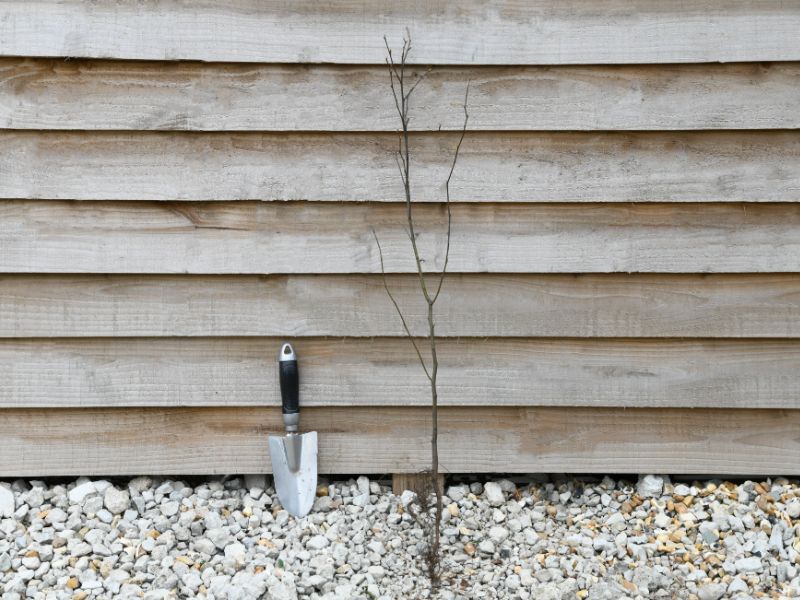
How to plant fruit trees in the ground
Planting potted trees
- Dig a hole or choose a planter that’s around 15cm wider in diameter than the root ball or pot
- You need to plant your tree to the same depth as its nursery pot and no deeper, as this can lead to stem rot. You will see a dark mark on the stem indicating where the soil level was. This should be just where the root flare is. Plant your tree to the same depth – placing a cane across the planting hole will help you to judge the correct planting depth against the surrounding ground level. Slightly raised planting is always better than planting deeper
- Next, dig plenty of organic matter into the ground at the bottom of the hole, plant your tree
- Stake trees and secure with a tree tie to prevent root disturbance
- Fill in the gaps with soil or a soil-based compost such as John Innes no. 3, and firm down well to remove air pockets
- Give you tree plenty of water and you’re done!
Planting bare root trees
- First, soak your tree’s roots in a bucket of tepid water for an hour or two, because they’ll need rehydrating
- Dig a hole that’s wide enough and deep enough to lay out the roots
- Place your plant in the hole at the same level as it was in the nursery field – you’ll see a soil line at the base of the stem
- Stake trees and secure with a tree tie to prevent root disturbance
- Fill in around your tree with soil or a soil-based compost such as John Innes no. 3 and tread down the soil to remove any air pockets
- Water well to settle the soil
- Apply a mulch and you’re done!
If weather conditions prevent immediate planting, pop your bare roots trees roughly into some loose soil or a pot of compost to protect the roots.
How to plant fruit trees in containers
- Choose a planter that’s around 15cm wider in diameter than the nursery pot your tree arrived in
- Take your tree out of its nursery pot, so you can use the empty pot as a guide
- Fill the planter with a soil-based compost such as John Innes no. 3. General multipurpose composts are not suitable for fruit trees
- Gently loosen some of the roots around the edges and bottom of the root ball.
- Place your tree in the planting hole so it’s at the same height in the soil as it was in its nursery pot
- Fill in the gaps with compost, firming it down well to remove air pockets
- Water your tree and you’re done!
How to prune and train fruit trees
Most fruit trees should be pruned when dormant (November to early March) with the exception of the stone fruit (prunus) family; plums, cherries, apricots etc should be pruned during the summer to avoid silver leaf infection. To train your trees into a fan, cordon or espalier, prune them from August through September.

- Remove dead, diseased and damaged wood – this opens the canopy and allows better air-flow
- Remove any crossing shoots that are rubbing together
- Remove out shoots growing towards the centre
- Remove any downward-growing branches
- There’s no need to prune young side-shoots
How to care for fruit trees
Fruit trees use a lot of energy to produce their blossom, leaves and fruit – and for growing larger of course! Your trees will be hungry – especially if they’re growing in a container, where they can quickly exhaust the nutrients in the soil.
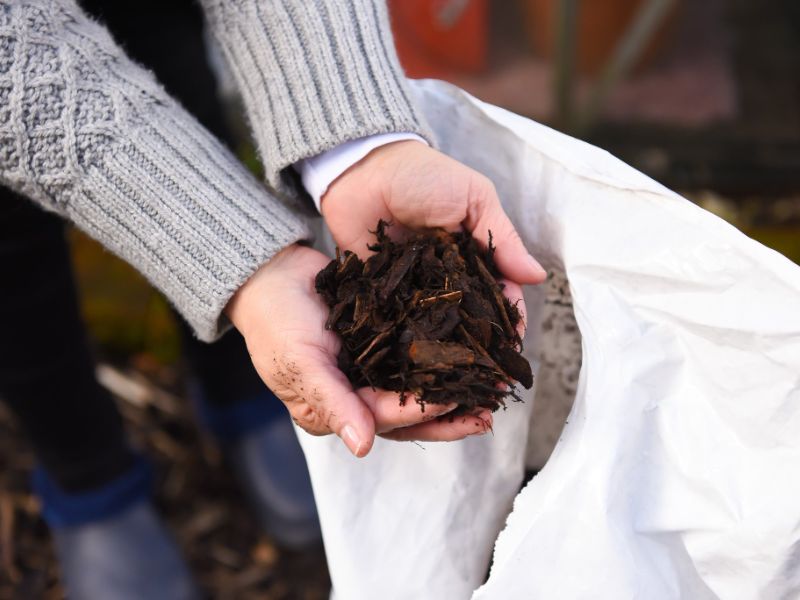
Mulching around trees helps to retain water and suppress weeds in summer, offers some frost protection, plus adds nutrients and organic matter back into the soil. To avoid damaging your plants, use well-rotted manure or garden compost, or ornamental bark.
Here’s how to keep your fruit trees healthy
- Spring and summer: keep the base of your trees clear of grass and weeds. Create a clear 80-100cm ring, which you can fill with mulch, stones or ornamental back
- Autumn or winter: add a layer of mulch around your trees. This should be done annually for 3-4 years, until your trees are established. Keep the mulch away from the stems of your trees, leaving a gap of about 10cm so water isn’t held against the bark
- Winter: raise containers on feed to prevent waterlogging
- Late winter or early spring: feed your fruit trees ready for the new growing season. Slow-release feed can be sprinkled around trees grown in the ground or growing in pots, with liquid feeds also available
- Water your new trees regularly in dry weather
- Check your plants for pests and diseases and treat these promptly
Best fruit trees to grow in a small garden
Patio and dwarf fruit tree varieties are specially bred to provide excellent crops in smaller gardens and patio containers. Here are some varieties to try:
Apple ‘Scrumptious’
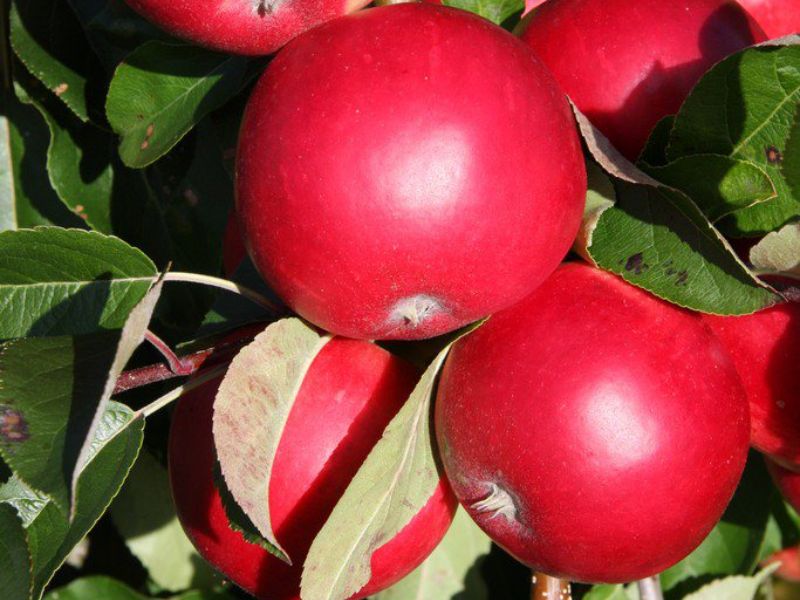
Plum ‘Victoria’

Cherry ‘Sylvia’

Fig ‘Little Miss Figgy’
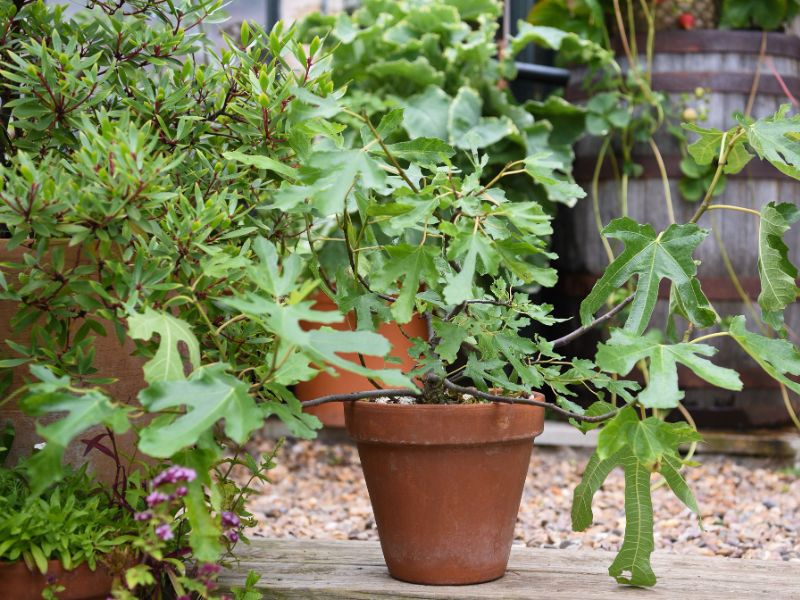
Now you know how to plant fruit trees!
Unsure which to choose? Read our guide on how to select new fruit trees for a few handy tips.

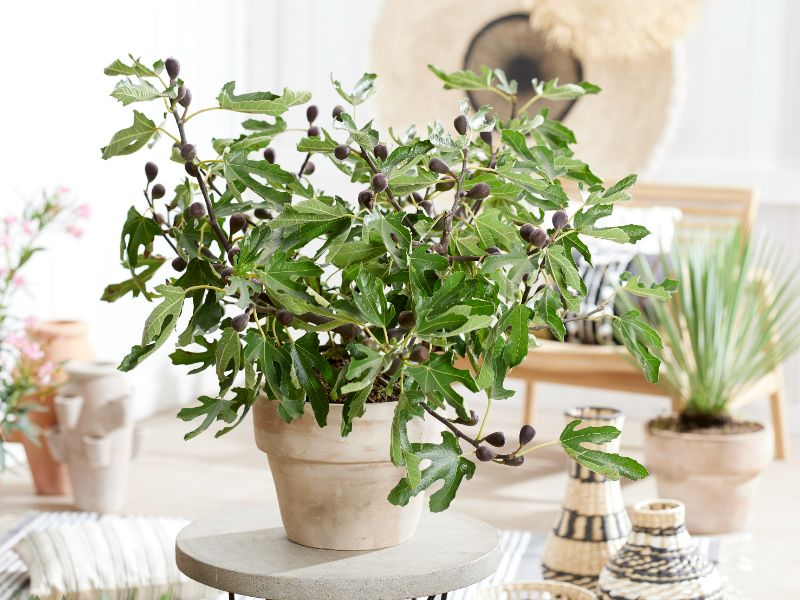
I am looking for growing guide for my male kiwi plant, arrived today (7th November) in a 9 cm pot. Has it been growing outside to this point? Is it enough to place it off the ground next to a brick wall or does it need more protection until I pot it on, or over winter?